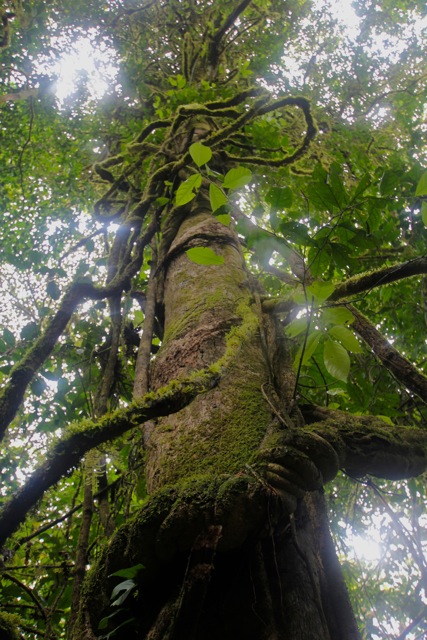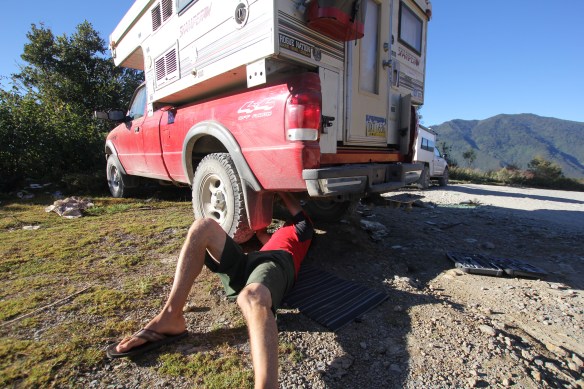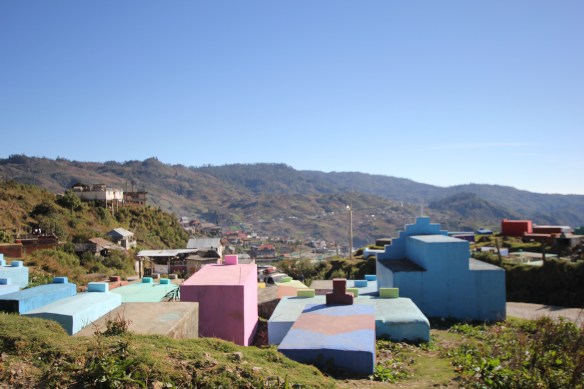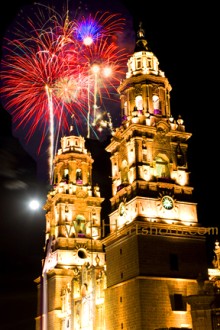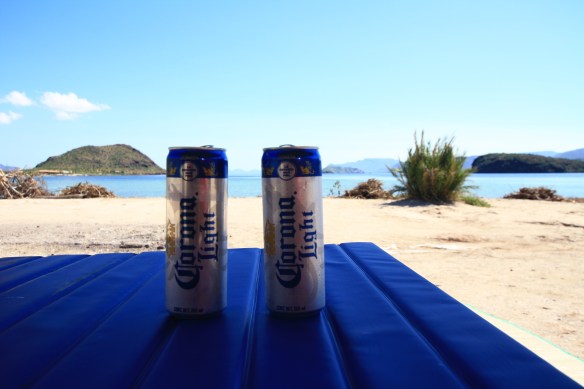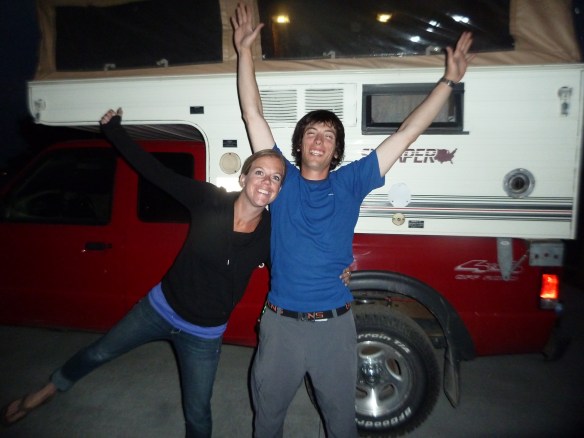After we survived Oaxaca and its curse, we decided we needed some good quality beach time in order to fully recover. Patagoniaorbust (yep, we are still together) had headed to the Pacific surf town of Puerto Escondido the day before, so after our car alarm was installed and found to be in perfectly loud working condition, we said goodbye to Oaxaca and headed west. There are two roads from Oaxaca to Puerto Escondido, both of which as we stared astounded at Google Maps, appeared to be tortuously windy. Taking the advice of our local hostel owner, we elected to take the slightly longer, potentially less windy, better paved road through Puerto Angel. We thought we had encountered dangerous curves in the States on Highway 1 in California and then again in Mexico on coastal Highway 200 out of Puerto Vallarta, little did we know, those paled in comparison to Highway 175. After about the 30th complete steering wheel revolutions, and 2000 feet of elevation gain we were at the top of the Sierra Madre del Sur mountain range.

Sierra Madre del Sur
Growing up in Montana and living in Alaska, I know mountains. Not these mountains, these were Mexican mountains and the only similarities were their height and beauty. Mexican mountains have towns and farms perched at the summit, at a respectable ± 7000 feet. Corn crops planted vertically down the side, are intermingled with boldly colored flowers, set amidst lushly green jungle with a few pine trees scattered here and there. Neat houses made of wood (a rarity in a concrete dominated Mexico) seemed to hang over the edge of the mountain, supported by a few wooden beams, laundry flapping in the stiff breeze.

Great view for laundry day!
We drove through a beautiful little town, San Juan del Pacifico, and wished we could linger there for a few days hiking, mountain biking, and getting our mountain fix. But the beach beckoned and we continued.
We rejoined Joe and Kylee at Zicolete Beach in Puerto Escondido and settled in for a few days of pure laziness aka heaven aka white sand, turquoise ocean, cold corona, and snorkeling.  The only real work we did involved walking to Playa Manzanilla every morning to plop our butts down under some umbrellas and melding our collective culinary skills together to whip up delicious red snapper tacos, pineapple salsa, and fried plantains. It was tough work.
The only real work we did involved walking to Playa Manzanilla every morning to plop our butts down under some umbrellas and melding our collective culinary skills together to whip up delicious red snapper tacos, pineapple salsa, and fried plantains. It was tough work. 
When we tired of the beach, heat, and humidity we packed up and hit the road for our longest driving day in Mexico, 407 miles to San Cristobal de las Casas, and back into the cool mountain air. Way too many toll fees and too much gas later, we made it. Arriving at Rancho San Nicolas on the outskirts of town that evening, it was cold!

Crammed in Suzie with Joe and Kylee cause it was too cold to eat outside
I am afraid to report that I have absolutely lost my Alaskan indifference to cool temperature. No longer is 65 degrees a warm day. In fact, I believe it only dipped down into the mid 40’s that night in San Cristobal, an average spring or fall day in Seward where I would normally be in a t-shirt making my way up Mt. Alice. Instead I was in Mexico, in the camper huddled under the down blanket as close to Ken as possible, debating whether it was worth the effort to light the heater. Luckily we survived the frigid temperatures and set off the next day to explore San Cristobal.  Here the indigenous tribes have a much bigger presence and women dressed in brightly colored traditional blouses, black woolen skirts, and two tightly plaited braids crowded the streets. We visited the Mayan Medicine Museum, a fascinating (at least to me) display of the traditional methods and medicines used by the Mayan healers. We then found one of my favorite places thus far. A wine bar with cheap delicious Mexican, Argentinian, and Chilean wine that also served popcorn and tapas.
Here the indigenous tribes have a much bigger presence and women dressed in brightly colored traditional blouses, black woolen skirts, and two tightly plaited braids crowded the streets. We visited the Mayan Medicine Museum, a fascinating (at least to me) display of the traditional methods and medicines used by the Mayan healers. We then found one of my favorite places thus far. A wine bar with cheap delicious Mexican, Argentinian, and Chilean wine that also served popcorn and tapas.

Anaka’s version of heaven
I actually could’ve stayed there for at least a week, but I don’t think everyone else had quite the same enthusiasm.
The next day we caught a collective (an old VW van to Ken’s delight) and headed to the Tzotzil village of San Juan Chamula, well known for its peculiar religious rituals.  As we hopped off the collective that cost each of us $1.68 each way, we were dismayed to see rows of tour buses belching out zip-off panted, fanny-pack belted, wide-brimmed hat wearing tourists. We belined for the white stone church that sits at the head of San Juan Chamula’s zocalo, hoping to beat the crowds. As we payed the 20 peso entrance fee, wafts of fragrant smoke and chanting floated out the door. We entered into the barely illuminated interior, the floor carpeted with pine needles and flickering candles. Statues of obscure saints lined the sides, candles on tables and candles on the floor (dangerously close to the dry pine needles) seemed to provide the lighting for the entire church. Small groups of worshippers were huddled around their chosen saint, some kneeling in silence, some chanting, a few crying. Combined it was a powerful scene. Unfortunately, there were also groups of tourists, us included, far outnumbering those who had come to worship. Any sense of spirituality was quickly replaced by the feeling that we were intruders peering into these peoples’ most private place. We were merely curious bystanders here to watch the show. It was a defining moment for the rest of our travels, and a concept I’ve struggled with in my previous travels. What is the fine line that prevents tourism from becoming an invasive and disrespectful practice that might ultimately have a negative effect on the people and their culture? As we continue on our journey we do not want to merely be the observers, making a spectacle out of someone’s every day life and practices. Instead, we will strive to respectfully partake in their culture and way of life, not staring or comparing. Some may call it responsible tourism, we think its basic human respect.
As we hopped off the collective that cost each of us $1.68 each way, we were dismayed to see rows of tour buses belching out zip-off panted, fanny-pack belted, wide-brimmed hat wearing tourists. We belined for the white stone church that sits at the head of San Juan Chamula’s zocalo, hoping to beat the crowds. As we payed the 20 peso entrance fee, wafts of fragrant smoke and chanting floated out the door. We entered into the barely illuminated interior, the floor carpeted with pine needles and flickering candles. Statues of obscure saints lined the sides, candles on tables and candles on the floor (dangerously close to the dry pine needles) seemed to provide the lighting for the entire church. Small groups of worshippers were huddled around their chosen saint, some kneeling in silence, some chanting, a few crying. Combined it was a powerful scene. Unfortunately, there were also groups of tourists, us included, far outnumbering those who had come to worship. Any sense of spirituality was quickly replaced by the feeling that we were intruders peering into these peoples’ most private place. We were merely curious bystanders here to watch the show. It was a defining moment for the rest of our travels, and a concept I’ve struggled with in my previous travels. What is the fine line that prevents tourism from becoming an invasive and disrespectful practice that might ultimately have a negative effect on the people and their culture? As we continue on our journey we do not want to merely be the observers, making a spectacle out of someone’s every day life and practices. Instead, we will strive to respectfully partake in their culture and way of life, not staring or comparing. Some may call it responsible tourism, we think its basic human respect.
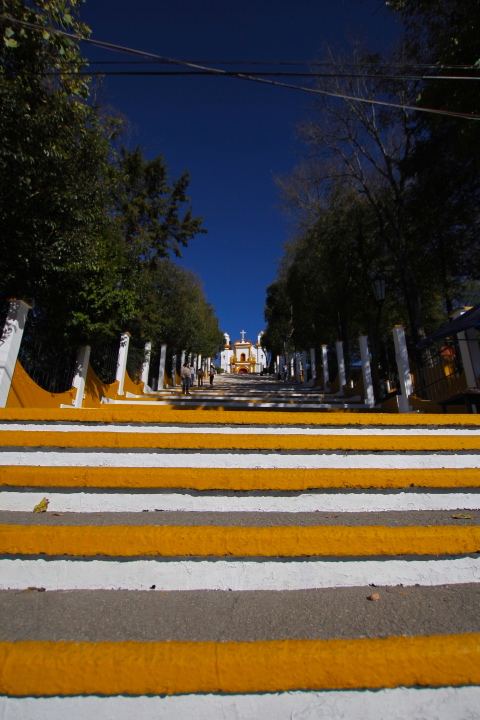
High rise church in San Cristobal
From San Cristobal we crawled at a painfully slow pace over a record number of topes (227 by our count) to Palenque, stopping for a refreshing dip in Agua Azul before arriving at Mayabell Campground.  As evidenced by the amount of tourists at Agua Azul and the next day at Palenque, we were back on the gringo trail! That evening as we settled into camp we all eagerly listened for the first howl of the howler monkey. Far off in the distance I heard a combination groan/burp/fart/howl, that almost sounded like a constipated donkey bray. As these cries echoed all around us, we realized this was the infamous howler monkey. Unfortunately, we didn’t get any sound bytes, but were entertained by a group of monkeys in camp the next day.
As evidenced by the amount of tourists at Agua Azul and the next day at Palenque, we were back on the gringo trail! That evening as we settled into camp we all eagerly listened for the first howl of the howler monkey. Far off in the distance I heard a combination groan/burp/fart/howl, that almost sounded like a constipated donkey bray. As these cries echoed all around us, we realized this was the infamous howler monkey. Unfortunately, we didn’t get any sound bytes, but were entertained by a group of monkeys in camp the next day.

Baby howler monkey!
Palenque far exceeded our expectations. We deftly evaded the persistent tour guides and the hordes of European tourists and along with our fellow intrepid explorers patagoniaorbust, we managed to discover and conquer every niche and cranny we could find. Even imagining that we had found passageways that no one else had encountered and braving hordes of bats flying in our faces. Actually, only Joe braved the lone bat, although it is debatable if it was a bat or a giant butterfly.
Even imagining that we had found passageways that no one else had encountered and braving hordes of bats flying in our faces. Actually, only Joe braved the lone bat, although it is debatable if it was a bat or a giant butterfly.
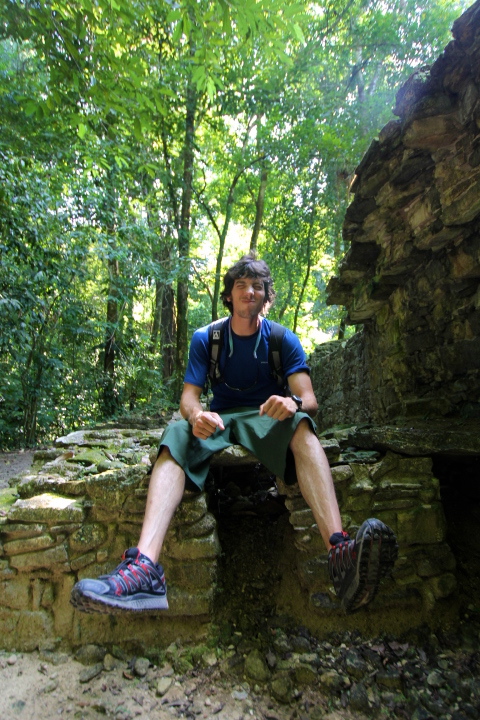
Obligatory ancient bathroom pic
From Palenque we headed to Campeche in a quest to find contacts (to replace the ones stolen in Oaxaca) and the makings for a traditional American Thanksgiving feast. Campeche proved to be a quiet little city with a beautiful historic center. That night instead of howler monkey cries, we were serenaded by an orchestra giving a free concert in front of the brightly lit cathedral right outside our hotel rom.  The next day we headed towards the Riviera Maya south of Playa del Carmen sans contacts and with the makings for a yummy albeit nontraditional Thanksgiving feast. We pulled into the Xpu-Ha Campground set a little back from the perfectly white sand beach and found ourselves surrounded once again by Canadians. Throughout Mexico, at every single campground, there has been at least one Canadian snowbird, and a glaring absence of Americans. We admit were a bit apprehensive about the ‘safety situation’ in Mexico prior to the beginning of our journey. That negative perception has been shattered. Despite the incident in Oaxaca, Mexico has far exceed our expectations. It is a beautiful, geographically varied country filled with friendly, welcoming people, delicious food, gorgeous beaches, towering mountains, and cultured cities. Never once have we felt threatened or unsafe. With a little common sense and travel know how, anyone can experience the amazingness that is Mexico, but I digress. That evening surrounded by Canadians we enjoyed our version of Thanksgiving; pan fried chicken with gravy, instant mashed potatoes, green beens, corn, and a few bottles of wine.
The next day we headed towards the Riviera Maya south of Playa del Carmen sans contacts and with the makings for a yummy albeit nontraditional Thanksgiving feast. We pulled into the Xpu-Ha Campground set a little back from the perfectly white sand beach and found ourselves surrounded once again by Canadians. Throughout Mexico, at every single campground, there has been at least one Canadian snowbird, and a glaring absence of Americans. We admit were a bit apprehensive about the ‘safety situation’ in Mexico prior to the beginning of our journey. That negative perception has been shattered. Despite the incident in Oaxaca, Mexico has far exceed our expectations. It is a beautiful, geographically varied country filled with friendly, welcoming people, delicious food, gorgeous beaches, towering mountains, and cultured cities. Never once have we felt threatened or unsafe. With a little common sense and travel know how, anyone can experience the amazingness that is Mexico, but I digress. That evening surrounded by Canadians we enjoyed our version of Thanksgiving; pan fried chicken with gravy, instant mashed potatoes, green beens, corn, and a few bottles of wine.
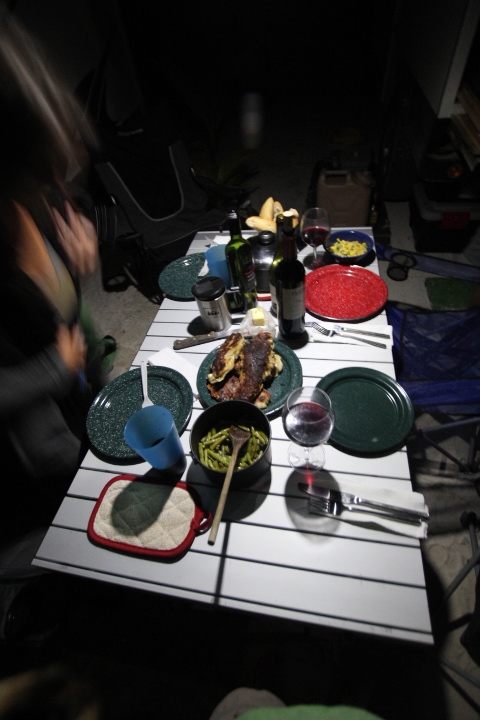
Thanksgiving feast
The boys even put a Mexican twist on it, wrapping everything up in tortillas. We enjoyed two days and nights at Xpu-Ha picking the brains of those Canadians, who between them probably had over 50 years experience RV’ing in Mexico and Central America and welcomed us young Americans in with wide open arms.
After Xpu-Ha, we based ourselves in Bacalar on the shores of the picturesque lake before crossing the border into Belize.

Lake Bacalar
More difficult days were spent lazing in the sun, paddleboarding, and cooling off in the freshwater lake. We also managed to squeeze in a pickup soccer game and some impromptu Spanish/English lessons with the park groundskeeper. Overall, Mexico was incredible. We drove approximately 4,730 miles from Tijuana to Chetumal crossing deserts, beaches, oceans, mountains and cities and eating our weight in tacos, and we would do it again in a heartbeat. Mexico we miss you already! Check out our Facebook page for more photos.


















